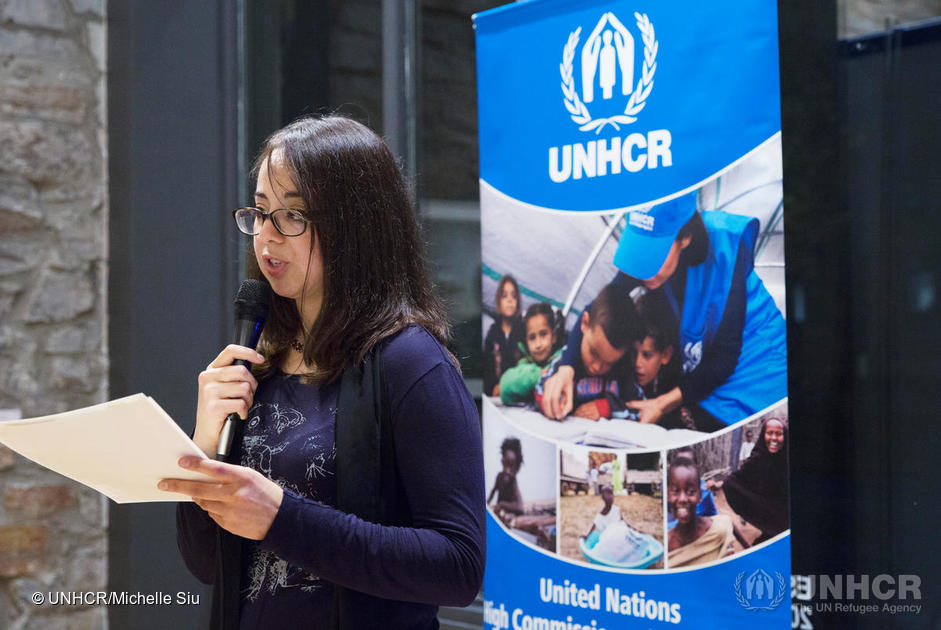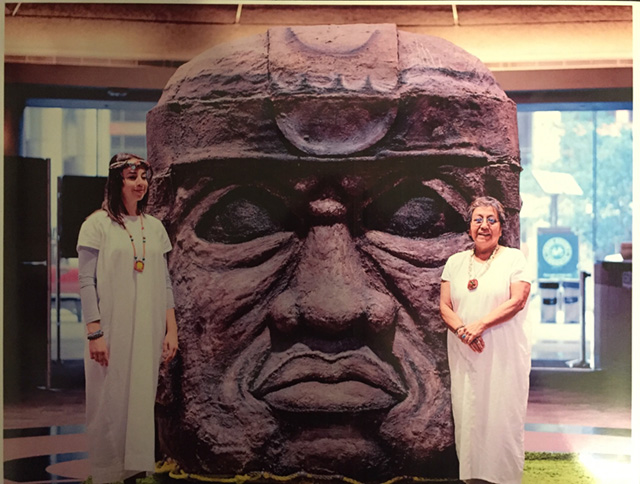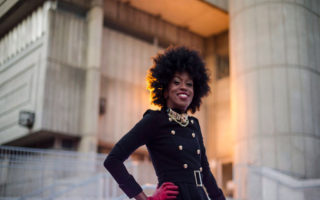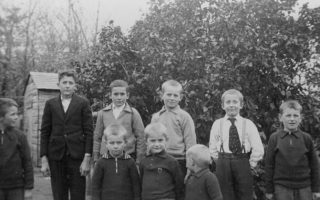
At an art event attended by UN High Commissioner for Refugees Filippo Grandi, Mexican artist Karina speaks about her experience of becoming a refugee after fleeing domestic violence in her home country. ©UNHCR/Michelle Siu
In her own words, Karina recounts what she endured as a survivor of domestic violence and how she is using art to inspire other women.
I’m sure my past is only a small piece in the beginning of a wonderful future in Canada. I became pregnant at the age of fifteen after a sexual assault and was forced to marry my abuser in Mexico. I gave birth to a son and later a daughter.
My life in Mexico was not easy. I experienced ten years of physical and emotional violence. I attempted to flee with my kids many times, but my violent and controlling husband always found me. My husband was a powerful well-connected doctor who also involved with organized crime. This was a man who was allowed to commit these crimes against me because of the corruption and patriarchal culture in Latin America.
Not only was I tormented by remaining in this violent situation, my situation worsened. I escaped alone from my home to the other side of the country where my parents lived. I was kidnapped by my husband’s criminal friends and brought before a judge who was also a personal friend of my husband. I ended up being sent to jail for a trumped up crime I didn’t commit.
“Eventually with the help of an organization, I got out of my country and obtained refugee status in Canada. I have since remarried and had another child. I have been navigating the very difficult road to recover my sense of dignity, my autonomy, my sense of self-worth as a human, as a mother, a wife and as an artist.”
I cannot thank enough all the people who tried to help me: the doctors, the councilors and social workers. I was an emotional wreck. Through all the years of struggling through the pain of losing my children and focusing on my depression, I came to realize that I needed to build strength by creating a future of hope for myself and my family in Canada. I was able to create and rewrite my story by getting really involved in the community and my art.
I was very lucky to meet with an artist, Maria, originally from Guatemala. What a magnificent and empowering experience this became for me. Five days a week for more than four months we worked together with our hands to create an eight foot tall papier-mâché sculpture representing one of the Olmec rulers of the first civilizations in Latin America.

Karina (left) and fellow artist Maria (right) stand beside their sculpture of a Mexican God, which was chosen for display at Toronto’s City Hall. ©Photo courtesy of Karina
I began the project unsure of myself and my abilities, but creating this sculpture became an exciting transformative experience. Maria taught me the importance of connecting to our ancient roots and the power of healing the soul through working on something you really believe in. She saw me as an artist. Each day we worked together, I was hungry for this chance to see myself again as an artist, a woman who was more than a victim not in control of her destiny.
“Each day I felt stronger and happier. The sculpture was eventually chosen to be placed in the Great Hall of Toronto City Hall, the centerpiece for The Magic of Latin America Exhibition in the Latin American Heritage Festival. It was exhilarating! We met the mayor, local politicians and many people who loved our Olmec head sculpture. For the first time in many years, I felt an enormous strength to engage in society. I was validated in my identity as an artist. ”
Yes, I am a mother, a wife, a sister, a daughter and yes I am also an artist to my very core.
Women from the North of Central America (NCA) and Mexico are fleeing various forms of sexual and gender based violence, including domestic violence and rape by gang members. A UNHCR study also recently revealed that 69 per cent of survivors of gender based violence from the NCA (El Salvador, Guatemala, Honduras) and Mexico have tried moving within their own country first, unable to find protection in their home areas.
DONATE TO HELP WOMEN AND CHILDREN ON THE RUN FROM VIOLENCE IN CENTRAL AMERICA




